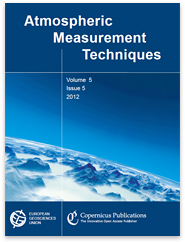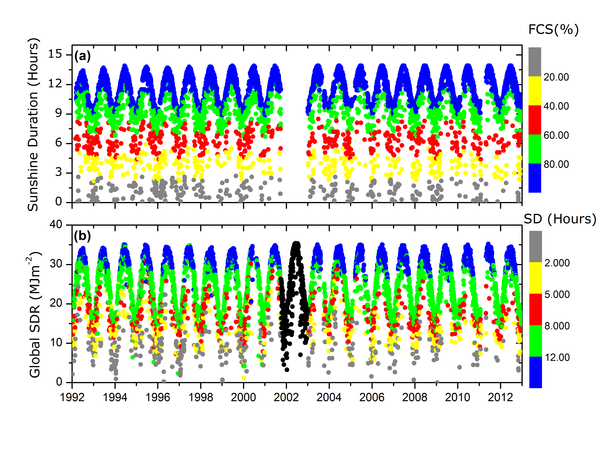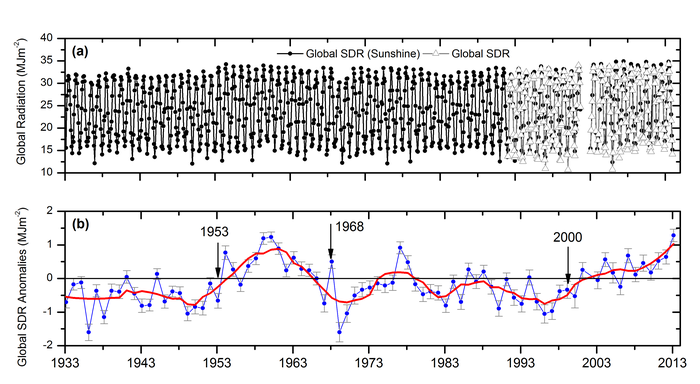“Re-construction of global solar radiation time series from 1933 to 2013 at the Izaña Atmospheric Observatory” paper published in Atmospheric Measurement Techniques Discussion

This paper presents the re-construction of the 80-yr time series of daily global shortwave downward radiation (SDR) at the subtropical high-mountain Izaña Atmospheric Observatory (IZO, Spain).
For this purpose, we combine SDR estimates from sunshine duration (SD) data using the Ångström-Prescott method over the 1933/1991 period, and SDR observations directly performed by pyranometers between 1992 and 2013 (Figure 1). Since SDR measurements have been used as a reference, a strict quality control has been applied, when it was not possible data have been re-calibrated by using the LibRadtran model. By comparing to high quality SDR measurements, the precision and consistency over time of SDR estimations from SD data have successfully been documented. We obtain a overall root mean square error (RMSE) of 9.2% and an agreement between the variances of SDR estimations and SDR measurements within 92% (correlation coefficient of 0.96). Nonetheless, this agreement significantly increases when the SDR estimation is done considering different daily fractions of clear sky (FCS). In that case, RMSE is reduced by half, up to about 4.5%, when considering percentages of FCS >40% (90% of days in the testing period). Furthermore, we prove that the SDR estimations can monitor the SDR anomalies in consistency with SDR measurements and, then, can be suitable for re-constructing solar radiation time series.
The re-constructed IZO global SDR time series between 1933 and 2013 confirms discontinuities and periods of increases/decreases of solar radiation at Earth’s surface observed at a global scale (Figure 2), such as the early brightening, dimming and brightening. This fact supports the consistency of the IZO SDR time series presented in this work, which may be a reference for solar radiation studies in the subtropical North Atlantic region.
For more details about this work please refer to: García, R.D., Cuevas, E., García, O.E., Cachorro, V., Pallé, P., Bustos, J.J., Romero-Campos, P., and de Frutos, A.M. : Re-construction of global solar radiation time series from 1933 to 2013 at the Izaña Atmospheric Observatory, Atmos. Meas. Tech. Disccuss. 7, 4191-4227, doi:10.5194/amtd-7-4191-2014,2014.

Figure 1. Time series of the (a) sunshine duration (hours), where the color scale indicates the fraction of clear sky values (FCS, %); (b) global SDR from 1992 to 2013 at IZ0. The color scale indicates the sunshine duration (hours).

Figure 2. Time series of the (a) monthly means of the global SDR (MJm-2), where the black dots represent the global SDR obtained from SD data and the grey triangles represent the global SDR measured between 1992 and 2013; (b) annual means of the global SDR anomalies. The arrows indicate the change-point dates and the error bars indicate ±1SEM (standard error of the mean). Five-yr moving average is shown in red.







